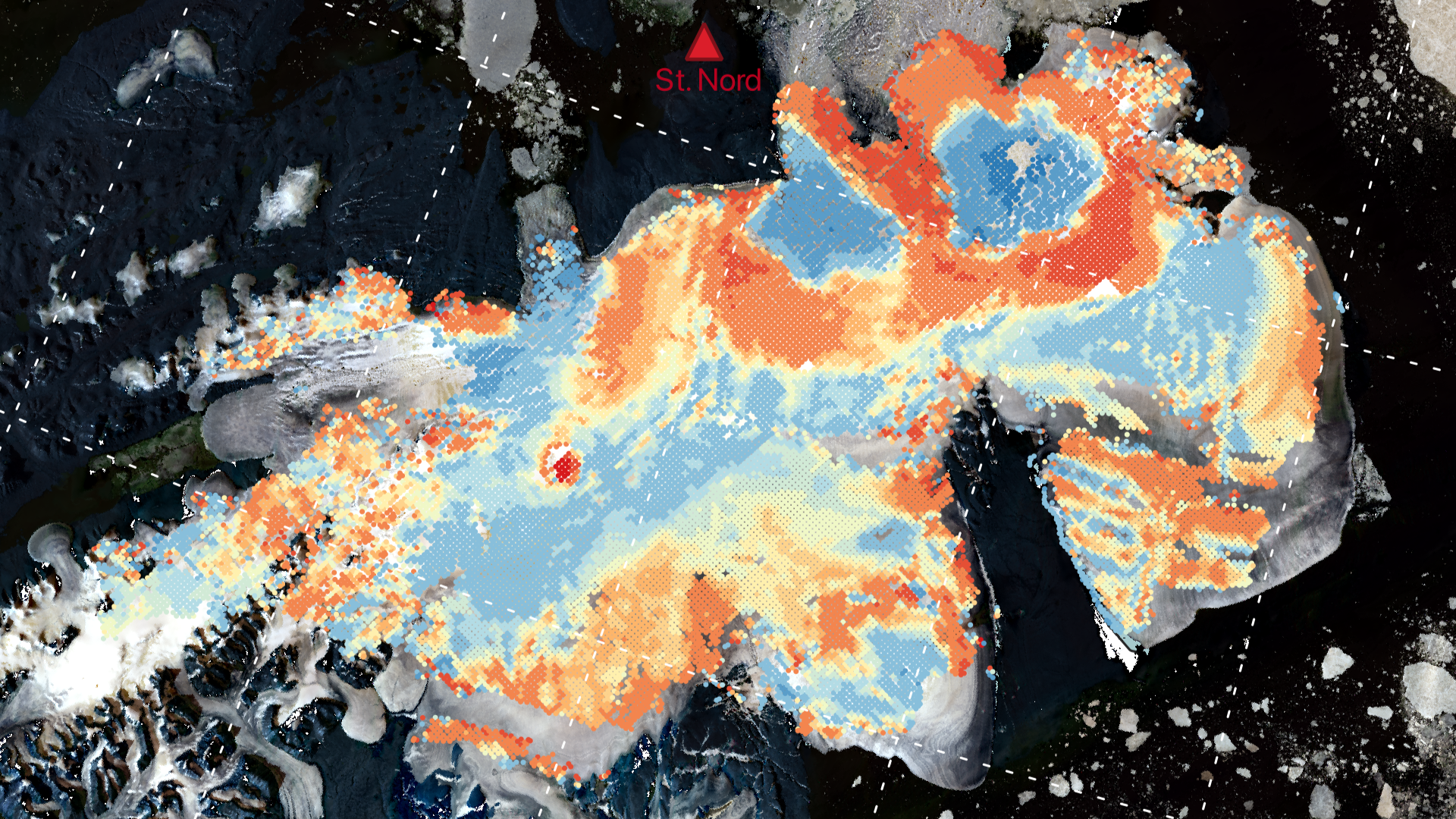Flade Isblink
The climate of Flade Isblink and its surrounding region is influenced by large-scale atmospheric circulation patterns, such as the Arctic Oscillation and the North Atlantic Oscillation, which can modulate temperature and precipitation patterns on seasonal and interannual timescales. Changes in these atmospheric circulation patterns can have significant implications for the climate of the Arctic, including Flade Isblink, and can influence surface mass balance and glacier dynamics. Multiple processes - including both dynamical and surface processes - appear to be driving these changes, making this ice cap a well-suited location for studying the impacts of extreme events.

Key processes and drivers: Clearance of sea ice and frequent formation of open water areas (polynyas) by wind action impact the conditions of the ice cap. Rapid and variable elevation changes on the ice cap is observed, indicating competing effects of surface mass balance change and dynamic instability. Stress between sea ice and ice shelves.
Case study objectives
- To build a comprehensive suite of EO-based data (existing and developed) characterising recent changes of Flade Isblink and its surrounding ocean and sea ice to characterise extreme events that are likely to have implications for the ice cap.
- To perform a scientific analysis of the relationship between sea ice dynamics, including polynya events, and the behaviour of outlet glaciers surrounding Flade Isblink as well as the ice cap’s surface mass balance, with a focus on quantifying the impact of sea ice variability on glacier flow rates and ice thickness changes.
- To establish a framework for assessing the interconnectedness of extreme sea ice events, such as winter polynyas, with observed changes in Arctic ice pack composition and outlet glacier dynamics, thereby elucidating the feedback mechanisms between atmospheric and cryospheric processes in the region.